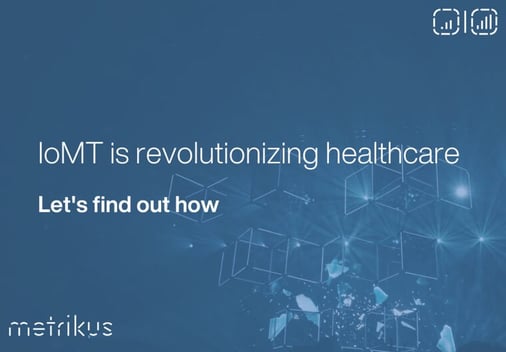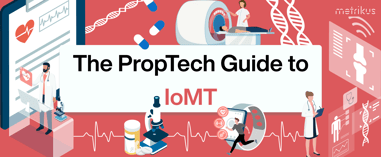What is IoMT and how is it changing healthcare?
The Internet of Medical Things (IoMT) has boomed over the last few years, with revenues estimated to reach $135 billion by 2025. Internet-enabled technology is transforming the efficiency and effectiveness of the healthcare industry, with uses for patients, caregivers, and medical staff.
This all sounds very positive, but IoMT can seem like a minefield to anyone who’s new to the industry. We wanted to cover the foundations of IoMT in a really clear, concise way. So read on for:
- What actually is IoMT?
- Why it’s so important
- Advantages
- The future of IoMT
What actually is IoMT?
IoMT describes the use of any connected (IoT) device for healthcare purposes. This includes medical devices, platforms and other tools, all of which are used in healthcare settings. They can be split into the following four categories:
- In-home IoMT – allows people to transmit medical data from their home to other locations, such as a hospital
- On-body IoMT – wearable medical devices that connect to remote monitoring systems
- Community IoMT – the use of IoMT within a broader location, such as tracking a patient in an ambulance
- In-hospital IoMT – any IoT used in a hospital setting, from smart cleaning to tracking the whereabouts of medical staff
Why is IoMT so important?
Like any technology, there are constant, fast-moving advancements which have really accelerated the standard and capabilities of IoMT in recent years. The increasing importance of IoMT has been driven by its ability to collect, generate, analyze and transmit data. In the medical field, where time and energy are so sparse, IoMT provides an invaluable way of speeding up so many processes.
Prior to recent advances in tech, much of how healthcare was approached has been reactive, but access to real-time data and 24/7 connectivity allows healthcare teams to maximize IoMT and create personalized, proactive and predictive care plans.
What are the advantages of IoMT?
IoMT means that medical professionals can reach data-driven, actionable conclusions more quickly, with less margin for error. Some of the key benefits include:
- IoMT saves costs by reducing doctor visits, hospital stays and re-admissions
- Ensuring better care through a constant flow of information and readily available analytics
- Machine-to-machine communication makes data easy to access, up-to-date and secure
- Remote monitoring of patients ensures they’re receiving the right treatment, even at a distance – this is often easier and cheaper, too!
- Connected devices mean that expensive drugs and medical equipment can be managed in a smarter, safer and more efficient way
We’re just scratching the surface here: IoMT also improves patient experience, facilitates better workflows, and reduces errors all-round. Take a look at our PropTech Guide to IoMT for benefits in more detail.
Where will IoMT go next?
The clue is in the title: our guess is that the future of IoMT will be to continue revolutionizing the healthcare industry. IoMT is an essential way to deliver elevated medical care at scale, while reducing costs and increasing safety.
At the moment, IoMT is very data-focused – but artificial intelligence and machine learning advancements will really expand the capabilities of IoMT in the near future, allowing professionals to create increasingly proactive and holistic models of care.
Itching to learn more about IoMT? Look no further.



